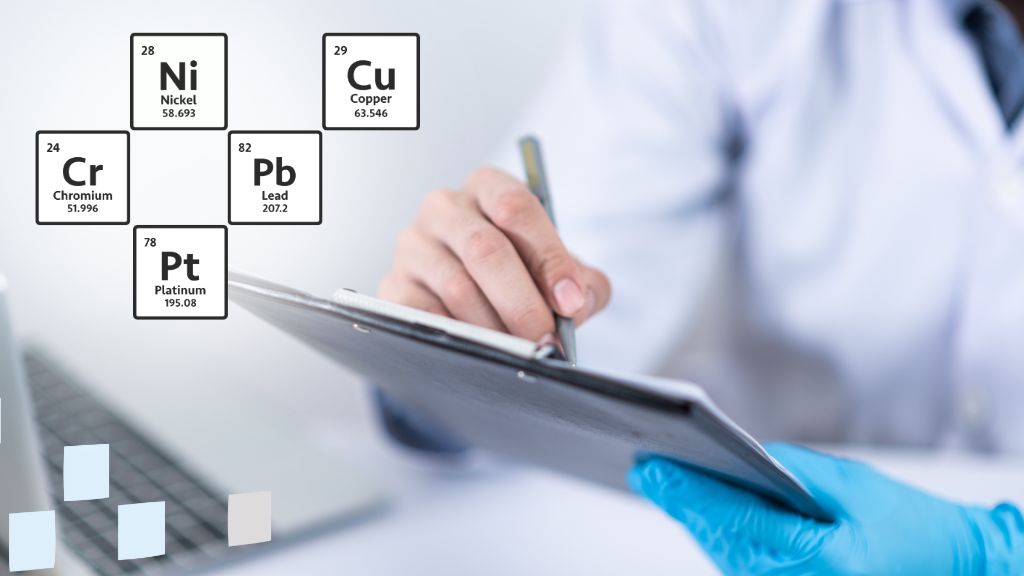
Risk assessment and Control of Elemental Impurities
ICH Q3D Guideline – does it apply to each kind of medicinal product register?
ICH Q3D Guideline imposes an obligation to control EI (Elemental Impurities) for:
- new finished drug products (as defined in ICH Q6A and Q6B)
- new drug products containing existing drug substances
- medicinal products available on the market for which new registrations have been initiated under the Mutual Recognition Procedure – MRP.
In SciencePharma, we help our customers prepare the appropriate risk assessment and control of elemental impurities and after, meeting certain requirements, you can be exempted from the obligation to control EI in a particular medicinal product.
If the prepared risk analysis indicates that control is needed for certain elemental contaminants, SciencePharma will help you to define specified limits and methods of control.
What exactly the elemental impurities are?
Elemental impurities (EI) are 24 elements from the periodic table with proven toxic effects on the human organism, listed and thoroughly characterized in the ICH Q3D guideline. The probability of their occurrence in a drug product is higher the more complex the manufacturing process. The causes of their formation can vary widely and result from a number of factors, e.g. due to interactions with production equipment or packaging systems, or due to their intentional addition at the manufacturing stage, e.g. as residual catalysts. Since elemental impurities, by definition, do not provide any therapeutic effect to the patient, each EI in a drug product should be identified, tested for its potential toxic effects on the human organism and, if necessary, properly controlled.

The main principles of the ICH Q3D guideline
The ICH Q3D Elemental impurities guideline covers three main issues: the evaluation of toxicity data for potential elemental impurities, a description of the determination of Permitted Daily Exposure (PDE) for each element and guidance on conducting a risk analysis of the EI present in the product. Preparation of a risk analysis is mandatory for the products listed above. Despite the high level of content of this document, it cannot refer to every individual case that a manufacturer may experience in its medicinal product. As a highly experienced company, SciencePharma can help you provide services tailored to both standard and innovative products.
Elemental impurities analysis in medicinal product
The core purpose of a comprehensive analysis of elemental impurities in a drug product is to ensure that each element does not exceed the Permitted Daily Exposure (PDE). Individual PDEs for each element are calculated based on a variety of factors that take into account their chemical properties, physical properties, route of administration, collected animal studies and also available clinical data.
The ICH Q3D guideline provides several examples of options to conduct a comprehensive analysis of EI in a drug product.
- Measure the concentration of each element in the final drug product and after compare the obtained results with the PDE value.
- Depending on whether the daily dose of the drug is equal to or less than 10 mg or exceeds 10 mg, the elemental concentrations for each drug component are calculated. If the calculation shows that these concentrations of EI in each ingredient are not exceeded, the components can be used in any proportion in the drug product.
- This is the most extensive option in which the determination of the permitted concentration of each El impurity takes into account its distribution in the individual components of the medicinal product. This option allows for the situation when the maximum permissible concentration of a given element in some components of the medicinal product may be higher than in the previously described cases, but this should be compensated by lower allowable concentrations in other components of the medicinal product. The total amount of each El in the medicinal product is compared with the PDE value.
At SciencePharma, based on our years of experience, we are able to propose a strategy for any type of drug product! An individual approach often opens the way to more economical solutions, as it is not always necessary to test the final drug product for elemental impurities.
If the analysis conducted reveals that there are indications that the level of elemental impurities may exceed the guideline limits, SciencePharma will help propose ways to control EI in the drug product!
Elemental impurity levels higher than an established PDE
What if you found that the PDE value is exceeded? Does this mean that your product is unsafe for a patient and should not be used? In general, in such situations, the applicator should first investigate the cause and identify possible solutions leading to a reduction in contamination levels. However, if we are still not able to meet the requirements of the Q3D guideline, there is another possible way out of such a situation on the horizon. In some special cases, there is an option to argue for a higher exposure limit for a given element. Such an approach is usually based on a benefit/risk ratio analysis, in which specific indications for the use of the drug product or short-term/intermittent dosing may be helpful.
However, preparing a comprehensive justification that takes into account all relevant factors can often prove to be a difficult and challenging task, especially when you don’t have experience in this area. If you are unsure whether your product meets the requirements of the ICH Q3D guideline, or are struggling to justify higher limits for certain elements, SciencePharma can help you cope with these tasks.
Risk assessment and control of elemental impurities summary
Elemental impurities have the potential to cause serious effects on a human organism, which is why so much importance is attached to properly controlling their levels in medicinal products. For this purpose, it is necessary to carry out an appropriate analysis taking into account each potential source of contaminants and determining their maximum amount in the product. Currently, an analysis of elemental impurities must be submitted for almost every new registry (including generic products). However, this requirement does not apply to herbal products, radiopharmaceuticals, vaccines, cell metabolites, DNA products, allergenic extracts, cells, whole blood, cellular blood components or blood derivatives including plasma and plasma derivatives, dialysate solutions not intended for systemic circulation, and elements that are intentionally included in the drug product for therapeutic benefit.
SciencePharma = professional help and duties relief
Conducting an effective risk analysis of elemental impurities requires both a very broad and precise approach to the topic. On the one hand, the entire manufacturing process should take into account all possible stages of the process, since each of them can be a potential source of the presence of any of the EI in the product under development. On the other hand, each of these stages should also be examined closely, taking into account all possible internal and external factors affecting the risk of contamination. Preparing such an analysis often requires extensive preparation, specialized knowledge and a lot of time. At SciencePharma, we realize what a huge undertaking it is to register a new drug product. That’s why we offer our assistance to make the whole process as easy as possible for you.
Our CMC Experts have already prepared many analyses of elemental impurities for various types of products. And of course, all our analyses were accepted by the competent authorities.
Contact us
We will prepare for you an elemental impurities risk analysis tailored to your product that meets the requirements of the ICH Q3D guideline and be accepted by the Competent Authorities.
SciencePharma can help you with (the list is not closed):
- analyzing your manufacturing process for potential sources of EI in your product
- determine whether it is necessary to test your product for EI content
- suggesting actions to minimize the risk of EI contamination
- prepare an argumentation in case of PDE exceedances (if conditions are met)
and other quality issues that may arise. Check our quality services.
Sources:
[1] ICH Q3A Impurities in New Drug Substances
If you are interested in cooperation in this area, please contact us. Our Experts will be happy to answer your questions.
